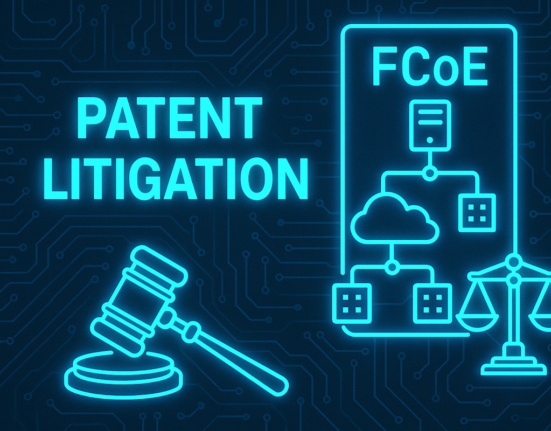Supply chains are under siege by an undeniable force: change. From shifting material sourcing locations to evolving inventories and fluctuating regulations, tariffs, and ports, every aspect of procurement feels the ripple effect. For large industrial manufacturers, change directly impacts operational uptime and business resiliency. While change is inevitable, how organizations adapt can make all the difference.
Maintenance, Repair, and Operations (MRO) is one area ripe for transformation. During my recent keynote at ProcureConMRO 2024, I explored how cutting-edge AI technologies redefine supply chain dynamics, empowering procurement leaders to act as strategic stakeholders to navigate change with agility. By leveraging purpose-built AI for scalable MRO inventory optimization, procurement optimization, and risk mitigation, businesses are uncovering untapped opportunities to thrive amidst uncertainty.
MRO and the Supply Chain Triangle
MRO occupies a unique position within the supply chain ecosystem, often called the “Supply Chain Triangle,” where technology, people, and processes intersect. Despite its critical importance, MRO is frequently sidelined, operating as a manual, unscalable process that struggles to integrate across disparate systems.
Yet, as AI gains traction, MRO is shifting from a cost center to a strategic value driver. Companies embracing AI-driven MRO practices experience benefits like reduced downtime, predictive maintenance, enhanced supplier compliance, and significant cost savings. Transforming MRO from a tactical necessity to a strategic imperative can deliver exponential returns on working capital and cost savings while driving operational efficiency and unlocking scalable enterprise-wide optimization.
AI in Action: Transforming MRO Practices
AI’s transformative impact on MRO stems from its ability to process and analyze vast amounts of data. It leverages tools like natural language processing (NLP), large language models (LLMs), deep learning, and graph databases. These technologies empower organizations to extract actionable insights from complex datasets, enabling informed decision-making in MRO management.
Here’s how purpose-built AI is revolutionizing MRO:
- Natural Language Processing (NLP): Simplifies data categorization and identifies trends in procurement and inventory.
- Large Language Models (LLMs): Provides predictive analytics to optimize inventory levels and mitigate risks.
- Graph Databases: Visualizes interdependencies within supply chains for enhanced visibility and decision-making.
- User-in-the-Loop Models: These models incorporate important human feedback to refine AI systems and understand the “why” behind practical, real-world outcomes like data management, inventory optimization, spend analytics and tail-spend reduction.
These technologies enable businesses to transform inefficiencies into opportunities, driving savings across contracts and eliminating redundant vendors.
Purpose-Built AI for MRO Optimization
What sets AI apart for MRO is its ability to automate and optimize even the most challenging processes. Tail spend management, for example, becomes seamless with AI tools that categorize low-value spend, identify consolidation opportunities, and suggest preferred suppliers.
AI’s capabilities are particularly effective in environments with repetitive tasks and historical transactional data, making it an ideal fit for MRO’s complexities. Key benefits include:
- Automated Data Processing: Continuous, real-time analysis reduces manual effort and ensures accuracy.
- Low-Effort Implementation: Intuitive systems ensure quick onboarding and user adoption without extensive IT prerequisites.
- Strategic Visibility: AI provides a unified inventory view across business units, bypassing the need for costly item-level data cleansing projects.
Elevating MRO practices to align with broader corporate objectives can unlock significant economic value and drive enterprise-wide efficiencies.
Overcoming MRO Materials Challenges with AI
MRO Materials optimization isn’t without its challenges. Common obstacles include:
- Downtime and Maintenance Costs: Reactionary purchasing behaviors often lead to inefficiencies.
- Inventory Carrying Costs: Excess inventory ties up capital unnecessarily.
- Obsolescence Risks: Holding outdated stock increases waste.
- Data Fragmentation: Inconsistent data formats across systems hinder visibility.
- Supply Chain Inefficiencies: Lack of critical spares results in costly disruptions.
AI tackles these pain points by streamlining inventory optimization and aligning procurement with necessary demand signals. They can secure materials from strategic suppliers to meet operational needs across their global MRO Supply Network. From monitoring vendor lead times to identifying tail spend opportunities, AI empowers procurement teams with actionable insights.
Unlocking Procurement Value Through AI
AI is redefining procurement as a strategic function, delivering value across key areas:
- Real-Time Supply Optimization: Share stock levels and transfer times across facilities to enhance resilience.
- Spend Analytics: Analyze price variances and material movement histories for actionable cost savings.
- Vendor-Managed Inventory (VMI): Ensure supply chain efficiency with predictive tools that anticipate demand their strategic suppliers can better manage..
By providing a comprehensive, well-understood, and organized data view, AI enables businesses to streamline purchasing, optimize inventory, and reduce working capital tied to MRO.
Conclusion
The supply chain landscape changes quickly, but purpose-built AI offers a powerful way forward. With the right tools, organizations can transform MRO from an operational hurdle into a strategic advantage. By unifying inventory views, automating processes, and aligning MRO with broader business goals, enterprises can achieve unprecedented efficiency, cost savings, and resiliency.
In a world of constant change, purpose-built AI for MRO Materials optimization ensures businesses are prepared to adapt and thrive.







